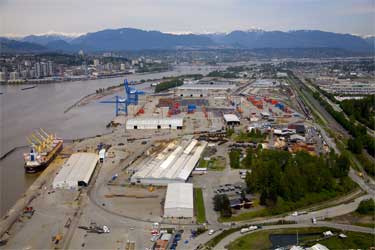 Aerial view of Vancouver’s Fraser Surrey Docks, which is located on the Fraser River.
Aerial view of Vancouver’s Fraser Surrey Docks, which is located on the Fraser River.
BNSF Rail to load coal through Canada’s Fraser Surrey Docks
By Leo Quigley, AJOTThe largest and most diverse multi-purpose terminal on North America’s West Coast is planning to expand once again.
The growth at Vancouver’s Fraser Surrey Docks, located on the Fraser River, will come in the form of a coal transfer facility that will move coal from rail to barges that will deliver it downriver to an existing loading facility at Beale Cove, Texada Island, off the West Coast of Vancouver Island.
 Aerial view of Vancouver’s Fraser Surrey Docks, which is located on the Fraser River.
Aerial view of Vancouver’s Fraser Surrey Docks, which is located on the Fraser River.
 Aerial view of Vancouver’s Fraser Surrey Docks, which is located on the Fraser River.
Aerial view of Vancouver’s Fraser Surrey Docks, which is located on the Fraser River.

Follow us on social media: